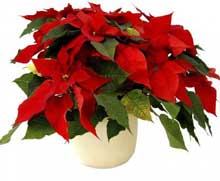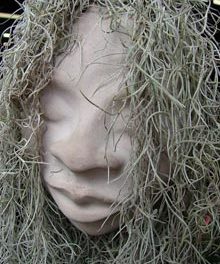 Just as you are finishing the turkey and are furiously decorating your home for the holidays it happens. You are not alone; it happens to everyone. Those houseplants you had on your porch and carefully acclimatized before bringing them indoors a month or so ago are pouting, big time. No matter how well you prepared them, tender plants always start to decline just when you want your home to look its prettiest. It could be the change in light, or perhaps it is the heat; we did have a few cold mornings when the heat came on and robbed some moisture from the air. Or – big gasp here – it could be insects. Spider mites, aphids or scale to name a few. They show up when you least expect them.
Just as you are finishing the turkey and are furiously decorating your home for the holidays it happens. You are not alone; it happens to everyone. Those houseplants you had on your porch and carefully acclimatized before bringing them indoors a month or so ago are pouting, big time. No matter how well you prepared them, tender plants always start to decline just when you want your home to look its prettiest. It could be the change in light, or perhaps it is the heat; we did have a few cold mornings when the heat came on and robbed some moisture from the air. Or – big gasp here – it could be insects. Spider mites, aphids or scale to name a few. They show up when you least expect them.
When my son noticed tiny webs under and between the leaves on a large croton I had brought indoors, I knew immediately it was spider mites. I quickly took this plant into the shower and gave it a good spritz with tepid water. Cold water could shock it, causing immediate leaf drop. Be sure to spray both the tops and undersides of the leaves and repeat this every week until there is no sign of the insects. A cotton swab with alcohol works well for aphids and mealy bugs. Being diligent about this will help to prevent having to use something stronger, it is generally not advisable to use chemicals on indoor plants but an insecticidal soap labeled for indoor use would be safe.
Probably the biggest single cause of houseplant problems is over-watering. In fact, this is far more harmful than under-watering. Because our homes generally do not provide the optimum growing conditions, the plant’s growth naturally slows down and they do not take up excess water. The result is roots that are rotting from the moisture. Overly compacted soil is another cause; there is just not enough oxygen in the soil. You may need to re-pot with some fresh, well-amended soil.
There is not much we can do to alleviate the problems caused by household heat, but be sure to locate any plants away from the direct blast from a heat vent.
You’ll find an abundance of Poinsettias everywhere you go right now. We have the South Carolinian Joel Poinsett, the first ambassador to Mexico, to thank for bringing what has become an iconic holiday plant back to the states in 1825. To keep your Poinsettias healthy, you will need to see that they have perfect drainage and, unlike most houseplants, you never want to let them dry out completely. They come from a humid, tropical environment and prefer slightly moist soil – but only slightly. Of course you will promptly remove that foil pot cover that is often seen on poinsettias; you want the water to drain away, and never feed a poinsettia while it is flowering. Clemson has a good fact sheet on how to keep them happy and even get them to re-bloom. http://www.clemson.edu/extension/hgic/plants/indoor/flowering/hgic1561.html
Take a few minutes to groom all your houseplants plants by removing any dead or less than perfect leaves to make them look neater and show off their features. The thrift shops have an abundance of pretty plates that make excellent plant saucers and a big red bow will make any plant, even one that has lost most of its leaves, look festive. Then relax and enjoy the season.








